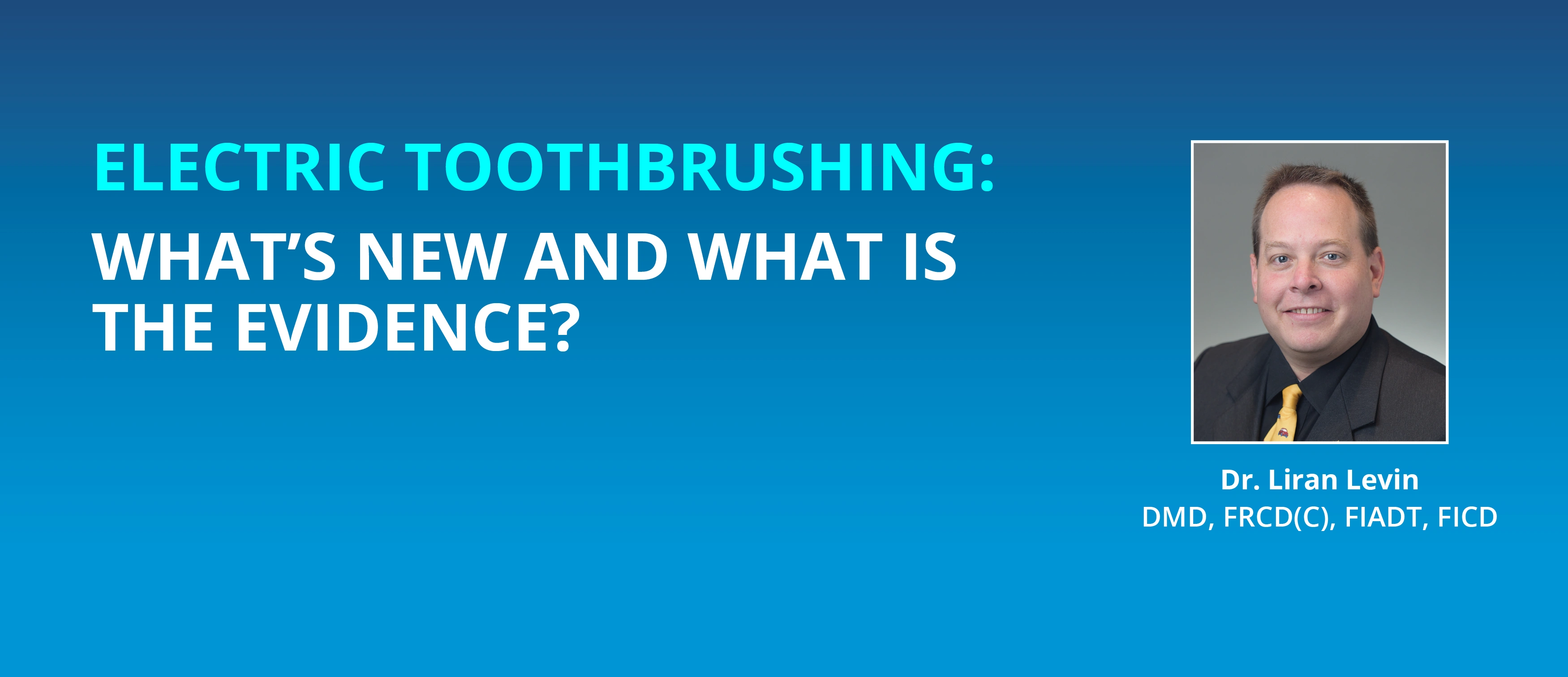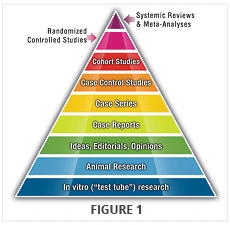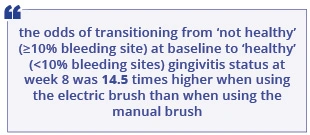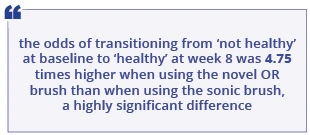When we are talking about evidence-based practice, there is a pyramid reflecting levels of evidence that we are referring to (Figure 1). This pyramid starts with in vitro lab research and goes through increasing levels of evidence until it reaches the top of the pyramid where systematic reviews and meta-analysis are. In systematic reviews and meta-analysis, we are evaluating or analyzing data from a variety of randomized controlled trials or a variety of studies that were done on a specific topic.
A recent example is a systematic review that we have published in the April edition of the Journal of the American Dental Association.1 In this study we have evaluated and analyzed randomized controlled trials comparing oscillating rotating versus other powered toothbrushes. Our findings showed that there is some evidence to suggest that oscillating rotating toothbrushes might remove more plaque and reduce the number of bleeding sites better than other powered toothbrushes.
Oral-B iO
Recently, Oral-B has introduced a new oscillating rotating electric toothbrush, the Oral-B iO (Figure 2), that combines Oral-B’s round brush head with oscillation rotations and micro-vibrations. Oral-B iO captures new design features that are aimed to improve the patient’s experience of the brush and encourage patient compliance.
WHAT DOES EVIDENCE SAY?
A recent supplement of the International Dental Journal3 provided several key studies that are representing the qualities of the new toothbrush. For example, in a randomized controlled study, designed to compare the Oral-B iO toothbrush to a manual toothbrush during an 8-week time period, it was reported that the odds ratio to transition from being a gingivitis patient to being a healthy patient after only 8 weeks were 14.5.4 This means, that the odds of transitioning from ‘not healthy’ (≥10% bleeding sites) at baseline to ‘healthy’ (<10% bleeding sites) gingivitis status at week 8 was 14.5 times higher when using the electric brush than when using the manual brush.
In another randomized controlled study that compared the Oral-B iO to a sonic toothbrush during an 8-week time period it was found that the odds ratio to transition from being a gingivitis patient to being a healthy patient after 8 weeks were 4.75.5 This means, again, that the odds of transitioning from ‘not healthy’ at baseline to ‘healthy’ at week 8 was 4.75 times higher when using the novel OR brush than when using the sonic brush, a highly significant difference. Of course, this ties in very well to our main goal as dental practitioners which is to prevent oral diseases and promote oral health. This is the sometimes-forgotten key for success in our profession.
References:











